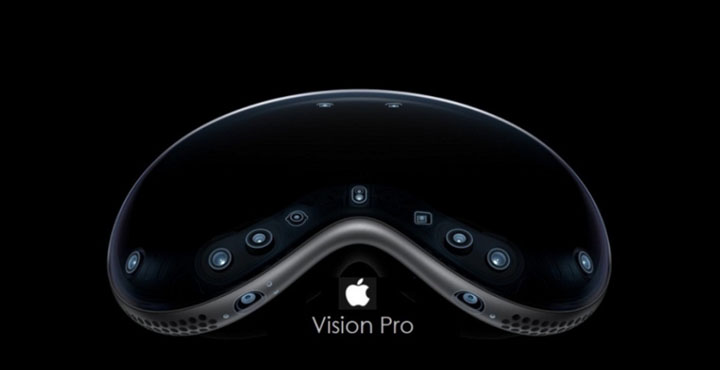
In the ever-evolving world of technology, the Apple Vision Pro emerges as a promising addition to the realm of virtual reality headsets. Priced at a staggering $3,500, it beckons consumers with promises of futuristic experiences and unparalleled immersion. But does it truly deliver on its hefty price tag? Let’s delve into the intricacies of this high-end gadget to find out.
What’s great about Apple Vision Pro?
The Apple Vision Pro boasts seamless integration with Apple’s ecosystem, offering an intuitive user experience akin to stepping into a sci-fi fantasy. Setting up the device is a breeze, requiring minimal effort comparable to setting up any other Apple device. With features like eye and hand tracking, navigating through apps feels natural and fluid, elevating the overall user experience.
One of the standout features of the Vision Pro is its ability to transform into a personal movie theater, providing users with an immersive cinematic experience. Whether watching the latest blockbusters or bingeing on favorite TV shows, the headset delivers stunning visuals and impressive spatial audio, rivaling traditional entertainment setups.
Moreover, when paired with a Mac, the Vision Pro becomes a productivity powerhouse, offering a virtual workspace that seamlessly integrates with existing workflows. The Mac Virtual Display feature expands the possibilities, allowing users to harness the power of a virtual 4K monitor alongside their Mac applications.
Despite its nascent gaming library, the Vision Pro shows promise with titles like What the Golf? and Synth Riders, offering a glimpse into its potential as a gaming platform. While still in its infancy, the gaming experience on the Vision Pro hints at a future where it could rival dedicated gaming headsets.
What’s not so impressive about Apple Vision Pro?
However, the Vision Pro is not without its drawbacks. Its weight and design make prolonged use uncomfortable, leading to fatigue and discomfort, detracting from the immersive experience. The tethered battery further adds to the inconvenience, limiting mobility and introducing a cumbersome element to an otherwise sleek device.
Additionally, the software experience on the Vision Pro is marred by occasional glitches and inconsistencies, detracting from the overall user satisfaction. From erratic eye and hand tracking to software bugs, these issues hinder the seamless experience promised by Apple.
Furthermore, the Vision Pro’s potential to isolate users raises concerns about its suitability for shared environments. The lack of user profiles and cumbersome sharing process make it a less than ideal device for households or communal settings, highlighting its limitations beyond individual use.
Final Verdict:
The Apple Vision Pro offers a tantalizing glimpse into the future of virtual reality, with its seamless integration, immersive entertainment, and productivity potential. However, its exorbitant price, coupled with ergonomic issues and software shortcomings, make it a difficult recommendation for all but the most dedicated enthusiasts.
While the Vision Pro represents a significant leap forward in VR technology, its current iteration leaves room for improvement. As Apple continues to refine its flagship headset, addressing concerns related to comfort, software stability, and social integration will be paramount to realizing its full potential.
For now, prospective buyers may find more value in exploring alternatives such as the Meta Quest 3 or Xreal Air 2 Pro, which offer compelling features at a fraction of the cost. As the VR landscape evolves, the Apple Vision Pro remains a beacon of innovation, albeit one tempered by practical considerations and room for growth.














